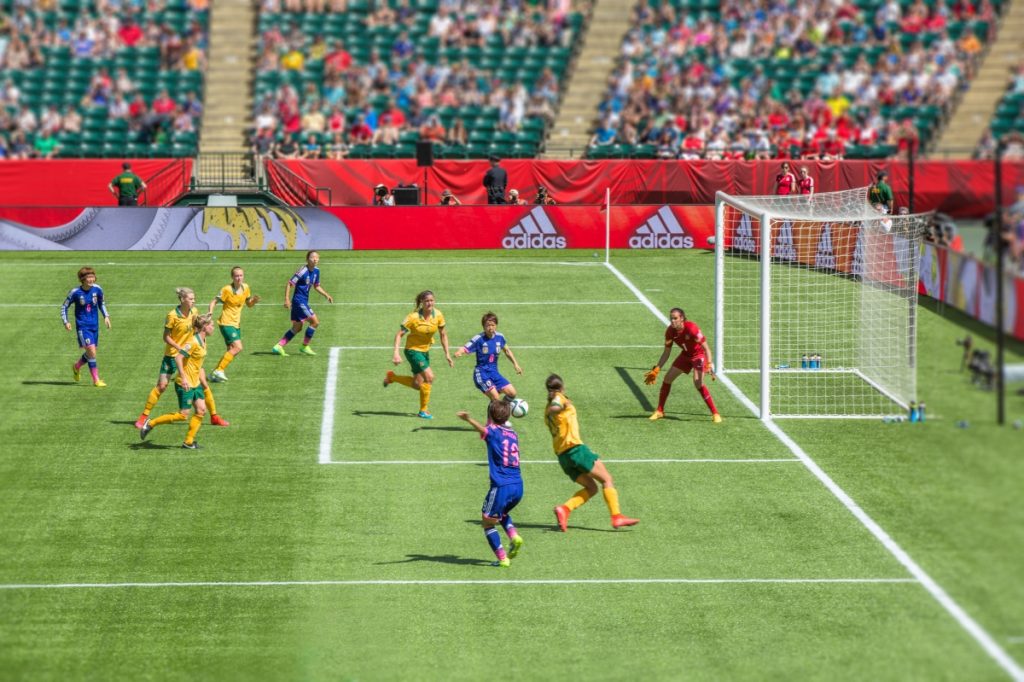How Far has Women’s Sport Come in the Past 20 Years? – Adam Paker
May 18, 2017
By Adam Paker
It was 20 years ago when the idea first came into my head. I was getting by in the City at the time but decided I really wanted to work in the sports industry. I got a lucky break soon after and have remained ever since in the exciting, crazy and occasionally disheartening world of sports.
Reflecting on this long involvement, what has changed over these 20 years? And what has remained constant, for better or for worse?
I will explore this over a series of articles, starting right here with a look into the world of women’s sport.
In 1999, Sepp Blatter memorably said: “the future of football is feminine,” but have the ensuing years really seen the blossoming of women’s sport that he and others predicted?
It is hard to shake off a gut feeling of dissatisfaction. As I look over two decades that promised so much in terms of women’s emancipation, many sports remain the preserve of men (how many women in motorsports or horse-racing could you name?). The media product that is served up to us daily is still heavily male-skewed. The pay gap remains stark in many sports, including ones with a strong women’s product such as golf. And as national and international think-tanks, such as Women in Sport and the Sydney Scoreboard regularly highlight, there is still a gaping dearth of women in senior leadership positions.
I feel this very keenly at a personal level. As the father of 2 daughters (with another hopefully on the way soon), I am acutely aware of all of the hurdles that society puts in front of girls and young women that may prevent them benefiting fully from sport.
When it comes to sport, boys still simply have it easier.
It’s not all doom and gloom though. Technically, standards of women’s sport have improved dramatically. I see this strikingly in team sports.

I was lucky enough to work on the 2003 FIFA Women’s World Cup in the U.S. It was a terrific event, but comparing footage from back then with the 2015 edition highlights an unmistakable and very welcome leap in quality.
That is hugely encouraging. So, too, has been the increased coverage of women’s sports and, in some sports at least, the closing of the gender pay gap. The parity in prize money awarded for male and female tennis Grand Slam winners – finally achieved in 2007– felt like a major and long overdue victory.
The last 20 years have produced many more female sporting icons. Whereas in the past the pantheon of sporting greats had a distinctly male bias, now the likes of Mia Hamm, Annika Sorenstam, the Williams sisters and Lindsey Vonn have taken up their rightful place among them, somewhat redressing the balance. And we should not ignore the achievements of trail-blazing women in sports administration such as Sarah Springman in triathlon or Stacey Allaster in tennis.
What of the future then? In the short term women’s sport must continue to receive funding, media coverage and career opportunity. Longer term, we have to acknowledge that women’s sport reflects wider gender inequalities that still exist in society as a whole. Perhaps through sport we can remind governments of the need to end such inequalities.
For all of the challenges though, I am upbeat. There is enough that we can look back on to feel encouraged that women’s sport could yet be on the verge of a golden age within the next 20, as long as we are all willing to put in the work.
About the contributor:
Adam Paker has been involved in the sports industry for 20 years, working with governing bodies, sponsors, leagues, clubs, volunteers and media groups across a variety of sports and events, including the FIFA World Cup and Commonwealth Games. He served as Chief Executive Officer of Commonwealth Games England from 2011 to 2014 and more recently as CEO of the Amateur Swimming Association (now Swim England).


